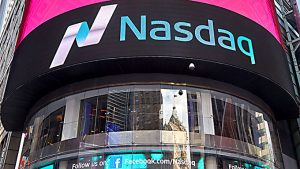Evan Harvey, Nasdaq: What’s Driving ESG? A Top Ten List

New York: NASDAQ
The prevalence and prominence of sustainability as a vital concept in the world – let alone the business community – is now clear. It has been driven by a host of dynamics that are both native to, and external from, business: environmental catastrophe and social crisis, economic disparity, and political dysfunction. Yet business must wrestle with the practical implications of sustainability in order to endure and prosper. That is why we tend to focus on the environmental, social, and governance (ESG) implications of sustainability.
Where sustainability connotes a broad philosophy, ESG refers to specific data. Corporate performance indicators, investor algorithms, regulatory schemas, and framework recommendations are all rooted in the proper calculation of ESG data. Right now, the global ESG data story may be incomplete, perhaps even inadequate, but there is a lot to wrestle with. How will the data improve? What are our expectations? Who is setting the standards? This list is intended to provide a brief answer to some of those questions.
“Companies are not driven by protocol but rather a desire to change the paradigm; Microsoft, Unilever, Intel, and Novo Nordisk leverage ESG to create an entirely new relationship with their stakeholders.”
This exercise is meant to bring some order and understanding to a wide open field. Companies frequently throw up their hands in dismay, assaulted by forces left and right in search of more and more ESG data.
1. Investors
On one hand, the investment community appears to be fixated on ESG. Blackrock chairman Larry Fink pens a public letter every year, focused on the long-term benefits that ESG measurement, reporting, and evaluation can provide. Groups of investors – ranging from small advocacy groups (Ceres Investor Network on Climate Risk and Sustainability) to like-minded practitioners (The Forum for Sustainable and Responsible Investment) to very diverse petition projects (UN Principles for Responsible Investment) – have been banding together for years to socialise ESG investment strategies. But that effort has also generated some criticism. Beyond paper pledges and conference panels, how are investors really using ESG data?
“Any macroeconomic analysis and investment strategy focused on long-term, fundamentals-driven performance should incorporate ESG factors as a key pillar of its analysis,” according to fixed income specialist Franklin Templeton. “ESG speaks to an economy’s potential as an investment destination and the sustainability of that investment” (Global Macro Shifts, February 2018). ESG specialist firms like PAX, Parnassus, Aviva, and Boston Common Asset Management have been making hay in ESG for a long time – and even bigger firms are following suit. State Street, Blackrock, and Vanguard have all unveiled new ESG strategies since the beginning of the year.
2. Indexers & Innovators
The problem with top ten lists is twofold: no single entry gets the attention it deserves (case in point: #1 above) and many reasonable entries must of necessity be left out. I will try to deal with the latter by using some creative categorisation. The current category includes ESG indexers, such as MSCI and RobecoSAM – easy enough – but also a broad array of product “innovators” of many kinds. Many companies, for example, are innovative in the internal management and external reporting of ESG performance data. In most cases, they are not driven by protocol but rather a desire to change the paradigm; Microsoft, Unilever, Intel, and Novo Nordisk leverage ESG to create an entirely new relationship with their stakeholders.
But many product innovators are finding entirely new ways leverage ESG. The green bond and climate bond revolution, for example, would not have caught fire without the underlying data—and we have the Climate Bond Initiative actively setting best practices. Datamaran, an AI-driven “non-financial risk management” tool, uses sophisticated analytics to search and benchmark ESG data signals, among other things.
3. Exchanges
Stock exchanges first started getting into the ESG reporting space decades ago, in Johannesburg and Brazil most prominently. But what was once exceptional has now become the norm: thanks to the work of the UN Sustainable Stock Exchanges (SSE) and the WFE Sustainability Working Group (SWG), almost half of the stock exchanges on the planet have provided (or have committed to provide) ESG reporting guidance to their issuers. Nasdaq Helsinki was recently rated the most sustainable stock exchange in the world by Corporate Knights; more than half of its large listings disclose significant environmental metrics. Exchanges in London, Hong Kong, and Singapore (all in the top half of the Corporate Knights ranking) have recently rolled out ESG listing requirements. Many of these exchanges are leveraging ESG in other ways too – as indexers, bond issuers, ETF listing venues, and even providers of corporate services with an ESG angle. And the industry itself has tilted in another way: exchanges with an ESG-related business model, such as IEX and the Long Term Stock Exchange, have gathered some momentum.
4. Governments
The regulatory push for better, more complete and comprehensive ESG data is truly worldwide. In most cases, government regulators are seeking better reporting from public companies. The Non-financial Reporting Directive in Europe (2014/95/EU) does just this, requiring certain companies to file an ESG-focused declaration with their annual reports. Local country governance codes have been commonplace in the Nordics, but now we are seeing new ones emerge in Japan. New legislation in China (February 2018) focuses on mandatory environmental disclosures; UK rules mandate human rights and anti-slavery disclosures. France raised the stakes by requiring investors to more transparently report climate and social risks in their portfolios. Governments are also getting in on the green bond trend; U.S. municipalities brought more than $11B in green bonds to market last year (Moody’s Sector In-Depth, March 2018).
In the US, there were ESG-related efforts underway – the Dodd Frank reform bill, Department of Labor guidance for retirement plans, a seeming turn by the SEC towards revising decades of stale reporting protocols (Regulation SK) – but that momentum has slowed. Yet American companies are still voluntarily disclosing ESG data in record numbers, and multinationals are being caught up in the web of ESG reporting requirements abroad.
5. NGOs
The range of non-governmental organisations (NGOs) with a focus on ESG is very broad. We could list dozens of United Nations projects and agencies here: the UN Environment Program, UN Women, the Economic and Social Council (ECOSOC), and the 2030 Agenda for Sustainable Development (the impetus for the Sustainable Development Goals, or SDGs), to name a few. But other, more highly specialised groups have been making ESG-related inroad, specifically with the business community. Shift, for example, translates UN principles into actionable plans for business, creating partnerships between economic stakeholders to report on – and hopefully remediate – human rights issues. And there are too many to mention in the environmental space: the Natural Resources Defense Council (NRDC) and the World Wildlife Fund (WWF) come quickly to mind. The WWF has even advocated for better ESG practices in the Southeast Asia banking community.
6. Suppliers & Supply Chains
How are smaller companies drawn into the ESG debate? Small suppliers tend to be part of large corporate supply chains, and those large corporations are increasingly being asked to expand the scope of their ESG oversight and control. Competition for contracts now commonly requires an ESG performance disclosure, especially when doing business with government agencies. Consider the rise of the supply chain consultancies and standards-setters, such as EcoVadis, Enablon and the Sustainable Purchasing Leadership Council (SPLC). These firms tend to evaluate the sustainable pedigree of suppliers, so that corporate purchasers can be sure they engage with ESG-compliant vendors. Other entities (CDP, IBM Watson, McKinsey) provide ESG-related supply chain services. Various industry associations have been focused on ESG – most notably, the Responsible Business Alliance (formerly the Electronics Industry Citizenship Coalition), which has been driving supply chain responsibility for member companies (Apple, IBM, Samsung, Sony) since 2004.
7. Human Capital
There are significant performance pressures coming from within organisations as well. The concept of human capital management (HCM), the cultivation of collective economic value for an employee population, is inevitably tied to ESG concerns, as workers increasingly gravitate towards socially responsible and transparent companies (see studies by Nielsen, 2015, and Horizon Media, 2017). The prospect of recruiting and retaining top talent, especially in a tight market, seems to inevitably touch upon ESG metrics.
A growing awareness of corporate culture is also driving adoption. The relative happiness and productivity of employees used to be a matter for HR departments and line managers. But, as a 2015 Deloitte survey of 3,300 executives in 106 countries found, “top managers say culture is the most important issue they face, more important than leadership, workforce capability, performance management, or anything else.”
“A company’s approach to HCM—employee development, diversity and a commitment to equal employment opportunity, health and safety, labor relations, and supply chain labor standards, amongst other things – will vary across sectors but is a factor in business continuity and success.” This statement was made in a recent Blackrock Investment Stewardship letter (March 2018) that also indicated a more active investor engagement strategy on ESG matters, which is a sensible move. Intangible assets based on human capital grew from 17% of S&P500 market value in 1975 to 84% in 2015 (Ocean Tomo, 2015).
8. Academics & Analytics
Good HCM (and by extension, good ESG practices) can impact the company in other, measurably financial ways – as illustrated by one of the most compelling academic papers in this area (The Materiality of Human Capital to Corporate Financial Performance, Harvard Law School, 2015). Authors Larry Beeferman and Aaron Bernstein make a strong case for “the positive correlation between human resource initiatives and investment outcomes such as total shareholder return, return on assets, return on earnings, return on investment and return on capital employed.”
In addition to the environmental and social pressures that drive individual companies to consider ESG, there is a body of academic research (Eccles and Serafeim, Harvard; Todd Cort, Yale) that points to macroeconomic benefits as well. Recent meta studies have been able to convincingly integrate a great deal of underlying academic research in order to make a grand case – ESG and Financial Performance: Aggregated Evidence from More than 2000 Empirical Studies (2015) and From the Stockholder to the Stakeholder: How Sustainability Can Drive Financial Outperformance (2015).
Lastly, a number of firms now fund an analyst or team of analysts devoted to ESG research. A current scan of job boards confirms that Institutional Shareholder Services (ISS), PIMCO, and JP Morgan are actively looking to fill such a role right now.
9. Media
Companies always want to be included in “best of” lists and counted among the “greenest companies.” Popular media outlets (Newsweek, Forbes, and Fortune) have been driving this dynamic for years, and companies frequently make changes to their ESG strategy and reporting in order to qualify. The benefit of inclusion goes beyond brand value and good PR. FTSE Russell analysed the Fortune 100 Best Companies to Work For and made a startling discovery: An equally-weighted index of the public companies on the list returned 11.66% annually over the last two decades, beating other relevant benchmarks by nearly 5% (The Best Companies to Work For Are Beating the Market, Fortune, 2/28/18).
Traditional media companies have created sustainability-focused side projects (Bloomberg Sustainable Finance) or ceded some ground to new, socially fuelled enterprises that focus on ESG, such as GreenBiz. Serious environmental, social, and governance issues have been prominently featured on television (VICE, The Years of Living Dangerously) and in movie theatres (The Big Short, An Inconvenient Truth, Gasland), which considerably raises the profile of ESG concerns with the general public.
10. Rankers, Raters, and Reporters
This is probably the largest and most nebulous category. Twenty years ago, there were only a few firms that focused on developing ESG reporting standards – such as the Carbon Disclosure Project (now CDP) and the Global Reporting Initiative (GRI), which still stands tallest in the field. I would argue that no other institution has done more around the world to create, standardise, and promote ESG performance metrics than GRI. Even though I currently sit on the Global Sustainability Standards Board, which operates under the auspices of GRI, my opinion would not vary on this matter.
But there is so much more to this space than just the GRI Standards. Technical reporting structures (COSO, ISO), financial disclosure protocols (SASB), and framework aggregators (CDSB) are all integrating ESG considerations. Newer firms have become mainstream (eRevalue) or been acquired by the mainstream (Sustainalytics and Morningstar).
Despite the laundry list of institutions and projects cited above, some notable ESG drivers have been left out. Various business alliances, such as the World Business Council for Sustainable Development (WBCSD), have proven quite influential. The WBSCD (which is made up of CEO members) has even produced a Guide to the SDGs (2017) that directly focuses business leadership on practical ways to integrate ESG matters. These kinds of cross-boundary ESG projects may yet unlock real strategic potential and long-term value for many different stakeholders. i
About the Author
Evan Harvey is director of Corporate Responsibility at Nasdaq.
You may have an interest in also reading…
Stephen Colbert: Laughing All the Way to the Top – Comedian Airs Truth through Jest
Powerful, Authoritative, Patriot, Honourable, Independent, Courageous, Originalist, Strong, Kingmaker, All-Beef, Influential, Sponsored, Star-Spangled, National Treasure, Self-Evident, Ameriwill!, Principled, Indivisible, Constitutional,
Tamsin Lejeune: Saving the World in Style
Tamsin Lejeune, founder and CEO of the Ethical Fashion Forum and Common Objective, is uniting a global community behind a
Craig Ferguson The King of Chat who Vanquished Personal Demons — and Enchanted his Audience
If Craig Ferguson had been just another chat show host, his legacy may not have endured. At an imposing 6ft


























































































